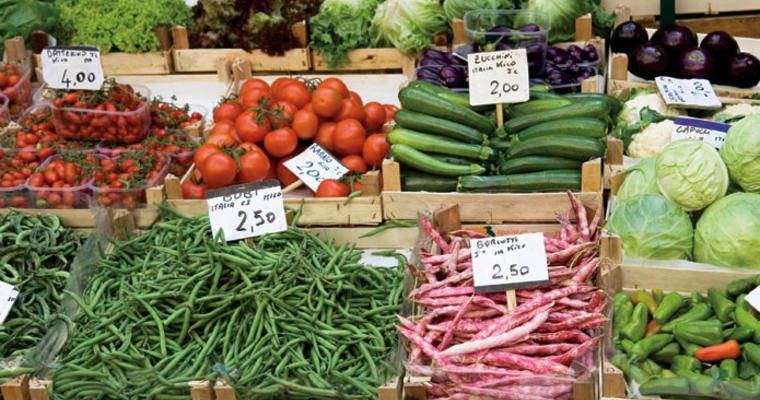Even as modern agriculture becomes more technologically advanced and large-scale commercial farming predominates, dining consumers are increasingly expressing interest in food from smaller operations closer to home. And a recent study by the Chicago-based research firm Technomic Inc. showed that 84 percent of operators surveyed said that buying local will have a great or moderate influence on purchase decisions in the future.
Locally sourced meats and seafood and locally grown produce are number 1 and 2 in the National Restaurant Association’s What’s Hot for 2015 Culinary Forecast of top-five food trends. The local-food movement, begun more than a decade ago as a means for consumers to reconnect with the land, has become consumers’ first priority. For many who were feeling detached from their food source, supporting local farmers and communities was one way to regain connection—which has resulted in a $7 billion industry, thus not only reconnecting consumers to their food but also giving back to their community’s economy. Local buying can also contribute to sustainable agriculture, enhancing the environmental quality and the natural-resource base on which a community depends. In addition, many consumers correlate the terms “local” and “sustainable” with “healthy.”
Defining local
The Economic Research Service (ERS) of the USDA says there’s no generally accepted definition of “local.” However, the Food, Conservation, and Energy Act of 2008, also known as the Farm Bill, defined local as anything less than 400 miles away or anything produced within state boundaries, which is as practical a definition as any.
If you buy from local vendors, you will probably buy from more than one. So how do you meet your consumers’ interests but also manage the costs of buying from multiple vendors and, most importantly, how do you purchase local foods safely? Purchasing food from unsafe sources is one of the five risk factors for foodborne illness identified by the Centers for Disease Control (CDC).
Know the regulations
The Food Code, published by the U.S. Food and Drug Administration, is the main source of regulations for all foodservice establishments. Chapters 3-1 and 3-2 of the Food Code state that food must be purchased from a licensed, approved supplier, one who’s been inspected and meets applicable local, state, and federal requirements. Some of those requirements are for potentially hazardous or Time/Temperature Control for Safety (TCS) products—foods, such as meat, dairy products, and fresh shell eggs—that need time and temperature controls to limit the growth of pathogens or the formation of toxins. In some states, you may purchase fresh shell eggs from a local farmer, if the farmer is licensed with the state. Any local dairy products that you purchase must be pasteurized.
Local produce can be desirable as part of the quest to use the freshest in-season product possible. However, produce can often be the source of foodborne illness. Unless local farmers have facilities for safely processing produce (e.g., especially cut leafy greens, sliced melons, cut tomatoes), the Food Code prevents you from purchasing them. Always carefully inspect and thoroughly wash any fresh, unpackaged produce that you do purchase.
Buying safely
Implement the following best practices if you decide to purchase foods locally:
-
Research any rules and regulations that apply to you in your county/state
-
Ask your state department of agriculture for a list of local growers
-
Visit local farmers markets and ask questions
-
Visit local farms to review their agricultural practices and inquire about their food-safety and food-transportation guidelines
-
Ask your distributor which local products it can offer
Food safety is a “farm-to-fork” process for everyone involved regardless of operation size. The large foodservice distributors know the Food Code. They have to. They maintain food-safety standards that their manufacturers must adhere to. Those manufacturers work with the farmers who supply their products to ensure that Good Agricultural Practices (GAPs) are in place. GAPs reduce the risk of contamination by pathogens.
Large foodservice distributors understand consumer demand for local food, have solutions in place for helping operators address it, and will work with state extension offices to help with the local initiative. Going through your distributor may be the easiest and simplest way to add local to the mix of products you use.
Just remember that, whether you purchase through a large distributor or from your local market, food safety should always be your primary concern.
Learn more
-
Ask your Customer Development Specialist about local-produce options near you.
-
Contact the Gordon Food Service Nutrition Resource Center at nrc@gfs.com anytime you have food-safety questions or concerns.
-
Find local farmers in your area at realtimefarms.com











